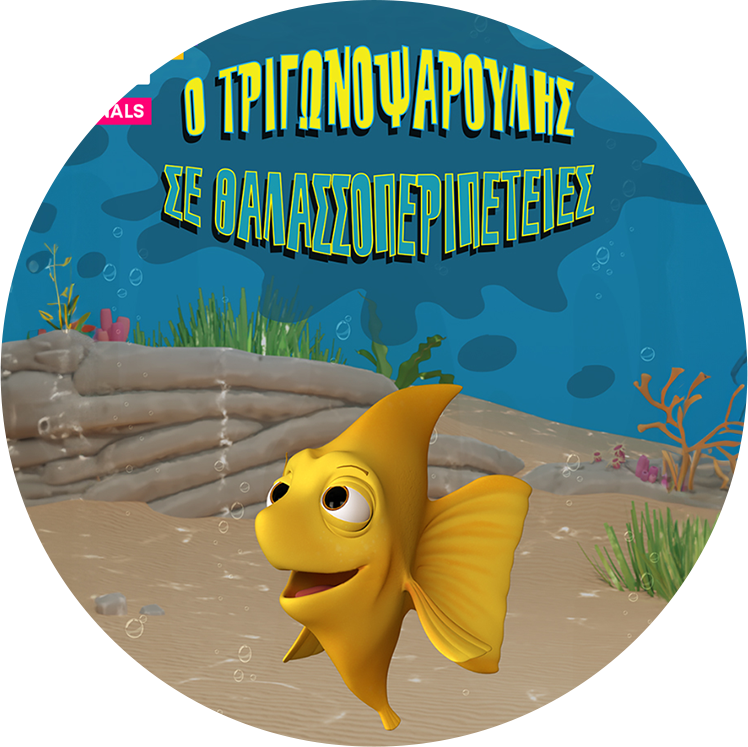
Greece’s animation industry has a promising future, but growth is contingent on continued and increased support from the government, broadcasters and private investors.
The Greek animation industry has experienced a notable resurgence in recent years, driven by a combination of government support, increased international recognition and the persistent efforts of industry associations.
Despite recent growth, the around 60 production companies working in animation still face significant challenges, particularly in securing adequate financial support and gaining sufficient backing from domestic broadcasters.
Growth and international collaboration
Since overcoming the financial crisis of 2015, Greek animation has made some impressive strides. The Association of Greek Animation, known as ASIFA Hellas, has been instrumental in promoting Greek animation both domestically and internationally. Their efforts have led to greater recognition of Greek animation, with numerous Greek studios now participating in international festivals and markets. This exposure has opened up new opportunities for co-productions and collaborations, particularly with countries like France and China.
The Greek government has taken steps to support the animation industry, primarily through tax incentives and rebates to make Greece an attractive destination for foreign productions. Led by Creative Greece, the Hellenic Film & Audiovisual Center was founded in 2024 and brought together the Greek Film Centre with the National Centre of Audiovisual Media & Communication, the body that manages the country’s 40% cash rebate scheme.
This coincided with an overhaul of the rebate scheme to simplify the application process and establish three separate categories for film and television; animation; and virtual reality and video games, allowing for a potential increase in funding allotted to each sector.
Additionally, Greece is part of Creative Europe, which facilitates co-productions and provides funding opportunities for transmedia projects. These initiatives aim to alleviate some of the financial burdens that local studios face and encourage the production of high-quality animation. Greece is often the minority co-producer in these collaborations.
Education and shifting focus to younger audiences
Institutions such as the Aegean and Ionian Universities offer specialised six-month programmes for animation. In recent years, a successful postgraduate programme has been running at the University of Western Attica (UNIWA). In addition, festivals such as Animasyros, held annually on the island of Syros, serve as important platforms for showcasing Greek animation and the country’s unique cultural heritage.
Since the late 2010s, there has been a steady increase in the production of animated
television series and feature films in Greece. This growth follows the success of Pandora & Plato (1995), which has found an audience both in Greece and abroad. More recent hits include the 3D animation feature film Karagiozis, based on a popular character from Greek shadow theatre, which has gained popularity in Greece and is now being marketed internationally, and the TV series Triangle Fish, as well as various short films that have made an impact on the festival circuit.
The industry’s focus is gradually shifting towards producing content for younger audiences, a market segment that had been largely neglected until recently. This shift includes developing adventure-themed animated content for children and teenagers to create engaging, age-appropriate stories that can compete on the global stage.
Using technology to diversify
Despite these successes, the Greek animation industry still struggles due to domestic broadcasters’ reluctance to invest in animation, preferring live-action content. This lack of support makes it difficult for animation studios to secure the necessary funding to bring their projects to fruition. Moreover, while there are approximately 60 animation production companies in Greece, most of them are small and rely heavily on advertising work to finance their own productions.
While the Greek government offers a 30% tax credit, the industry faces competition from other European countries with more robust support systems. For instance, Eastern European and Asian countries offer lower production costs, making them appealing alternatives for international co-productions.
Greek animation companies are increasingly embracing new technologies such as augmented reality (AR), virtual reality (VR) and interactive gaming to diversify their output, while platforms such as YouTube have allowed Greek animators to showcase their talents globally.

Greece’s animation industry has a promising future, but growth is contingent on continued and increased support from the government, broadcasters and private investors.
The Greek animation industry has experienced a notable resurgence in recent years, driven by a combination of government support, increased international recognition and the persistent efforts of industry associations.
Despite recent growth, the around 60 production companies working in animation still face significant challenges, particularly in securing adequate financial support and gaining sufficient backing from domestic broadcasters.
Growth and international collaboration
Since overcoming the financial crisis of 2015, Greek animation has made some impressive strides. The Association of Greek Animation, known as ASIFA Hellas, has been instrumental in promoting Greek animation both domestically and internationally.
Their efforts have led to greater recognition of Greek animation, with numerous Greek studios now participating in international festivals and markets. This exposure has opened up new opportunities for co-productions and collaborations, particularly with countries like France and China.
The Greek government has taken steps to support the animation industry, primarily through tax incentives and rebates to make Greece an attractive destination for foreign productions. Led by Creative Greece, the Hellenic Film & Audiovisual Center was founded in 2024 and brought together the Greek Film Centre with the National Centre of Audiovisual Media & Communication, the body that manages the country’s 40% cash rebate scheme.
This coincided with an overhaul of the rebate scheme to simplify the application process and establish three separate categories for film and television; animation; and virtual reality and video games, allowing for a potential increase in funding allotted to each sector.
Additionally, Greece is part of Creative Europe, which facilitates co-productions and provides funding opportunities for transmedia projects. These initiatives aim to alleviate some of the financial burdens that local studios face and encourage the production of high-quality animation. Greece is often the minority co-producer in these collaborations.
Education and shifting focus to younger audiences
Institutions such as the Aegean and Ionian Universities offer specialised six-month programmes for animation. In recent years, a successful postgraduate programme has been running at the University of Western Attica (UNIWA). In addition, festivals such as Animasyros, held annually on the island of Syros, serve as important platforms for showcasing Greek animation and the country’s unique cultural heritage.
Since the late 2010s, there has been a steady increase in the production of animated
television series and feature films in Greece. This growth follows the success of Pandora & Plato (1995), which has found an audience both in Greece and abroad. More recent hits include the 3D animation feature film Karagiozis, based on a popular character from Greek shadow theatre, which has gained popularity in Greece and is now being marketed internationally, and the TV series Triangle Fish, as well as various short films that have made an impact on the festival circuit.
The industry’s focus is gradually shifting towards producing content for younger audiences, a market segment that had been largely neglected until recently. This shift includes developing adventure-themed animated content for children and teenagers to create engaging, age-appropriate stories that can compete on the global stage.
Using technology to diversify
Despite these successes, the Greek animation industry still struggles due to domestic broadcasters’ reluctance to invest in animation, preferring live-action content. This lack of support makes it difficult for animation studios to secure the necessary funding to bring their projects to fruition. Moreover, while there are approximately 60 animation production companies in Greece, most of them are small and rely heavily on advertising work to finance their own productions.
While the Greek government offers a 30% tax credit, the industry faces competition from other European countries with more robust support systems. For instance, Eastern European and Asian countries offer lower production costs, making them appealing alternatives for international co-productions.
Greek animation companies are increasingly embracing new technologies such as augmented reality (AR), virtual reality (VR) and interactive gaming to diversify their output, while platforms such as YouTube have allowed Greek animators to showcase their talents globally.

ASIFA HELLAS
ASIFA HELLAS is a local association which aims to represent professionals and artists in
the disciplines of animation, motion graphics and visual effects. The association represents the International Animated Film Association ASIFA (Association Internationale du Film d’ Animation) in Greece and is a member of the Federation of Animation Producers Associations (Animation in Europe).


 Animation in Greece
Animation in Greece